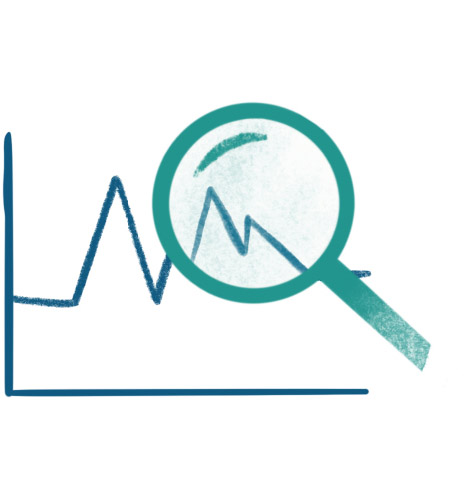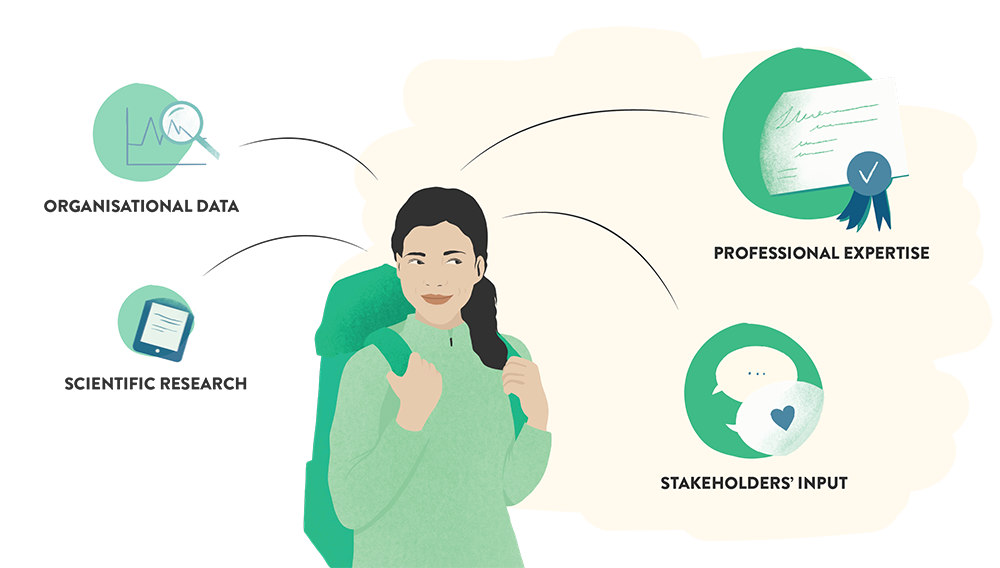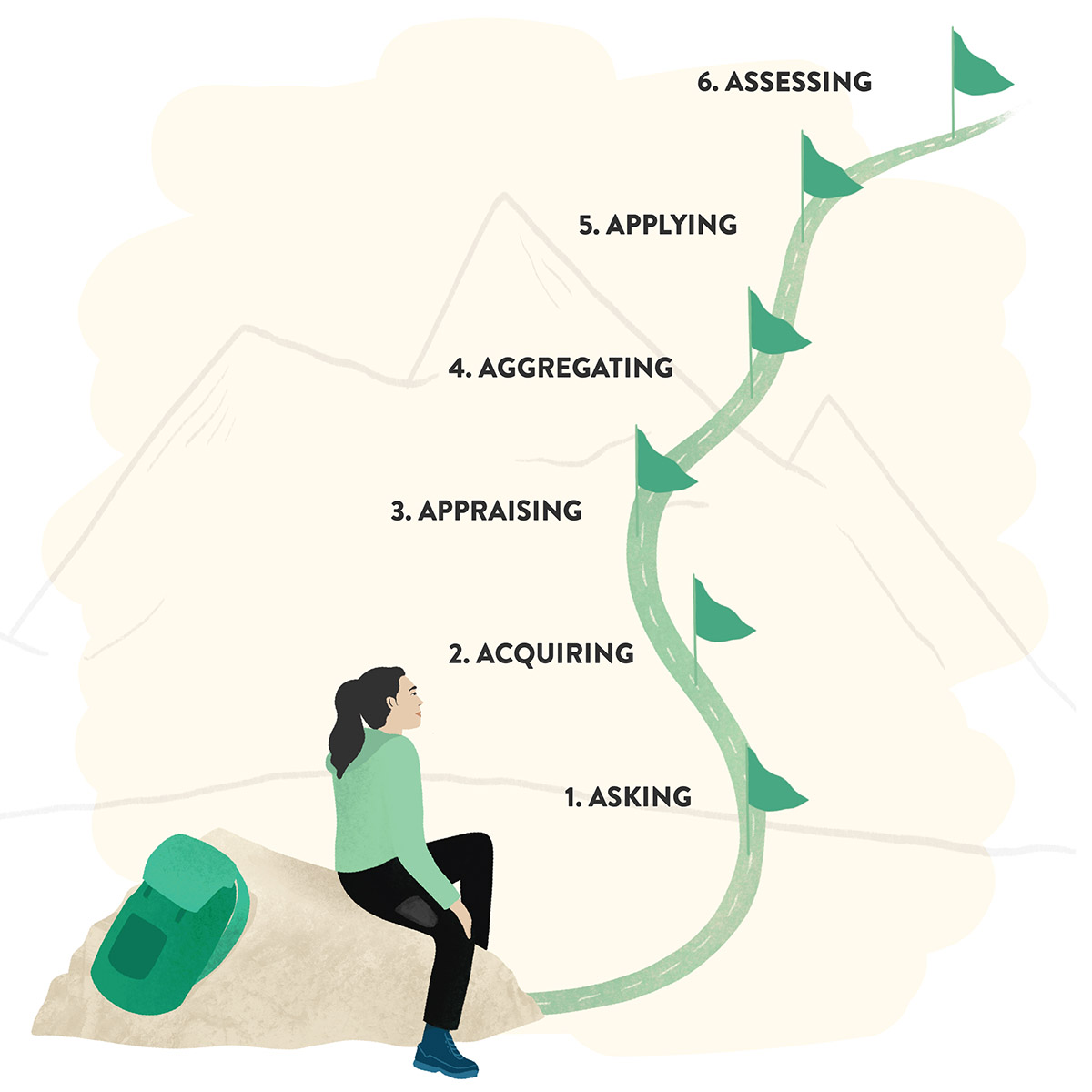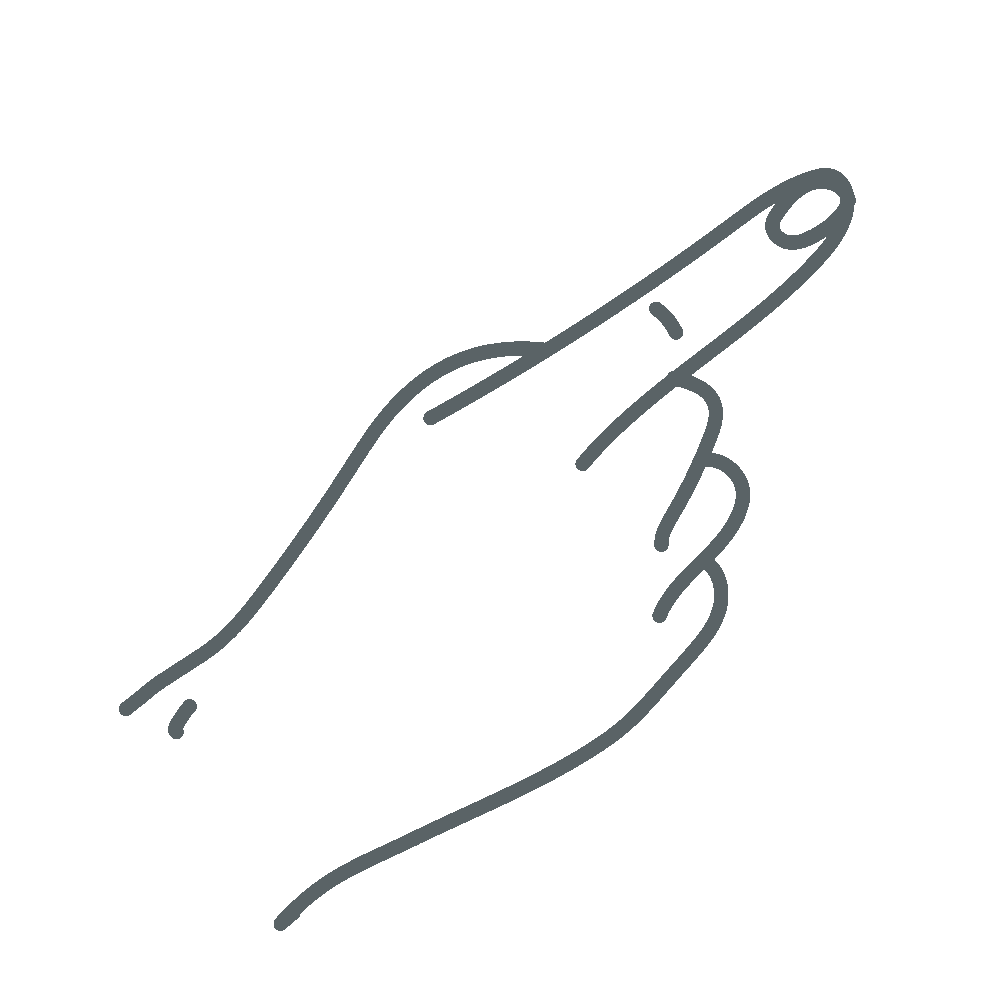#Evidence Based HR #Blogpost
In HR you shouldn’t just trust your gut feeling. Discover how Evidence-based HR improves your decision-making.
Episode 1: The Evidence-Based HR Backpack
Equipped for better decisions:
The Evidence-Based HR Backpack
Evidence-based HR (EBHR) is a better way to make people decisions in organisations. It’s a day-to-day practice of using the best available evidence and looking at it with a critical eye, to inform HR decisions. By practising EBHR, your decisions are more likely to achieve the results you expect from them.
Meet Evi. She is the HR manager of an international bike producing company called BisonBikes. Just in her forties, she has now worked for over fifteen years in HR.
Besides HR, her other passion is spending time outdoors, either with her son Noah or by herself. Evi is an avid hiker and likes to explore new landscapes and routes, relying on her skills and tools to find new paths towards her destination. She likes to do the same at work – learning continuously and making better decisions in order to make work better for everyone.

Recently, Evi has decided to send BisonBikes managers to an emotional intelligence workshop. However, she is not fully confident she did her best when making this decision – she felt rushed and didn’t make the time to look for all the information she wanted.
What about you and your last decision at work? Are you confident the process and the outcome were good?
What if there’s a better way of making HR decisions which makes it more likely to actually get the results you expect? Let’s learn to expect the unexpected.
Questioning your evidence is key
You might be thinking: “So, what’s wrong with my decision-making methods? I’m pretty happy with how most of my decisions turn out.” You might be, but researchers have looked at how decisions are made in organisations, and their conclusions are not so optimistic, namely: decision-makers use whatever evidence they have at hand, without asking themselves where it comes from and how trustworthy or relevant it is.
And that’s the best-case scenario. Often, decisions are made on the sole basis of intuition or trends. Considering how important HR decisions are – after all, they affect a large workforce in very meaningful ways – let’s all try to improve the way we make them.
An HR detective seeks best available evidence
Since we’re talking about EBHR, what does evidence mean? Do you need a deerstalker and a magnifying glass to find it? You don’t, but you do get to feel a bit like a modern HR detective. Evidence simply refers to information: any data that’s out there and can help you learn more about the alternatives you’re considering and their effects.
Here are the 4 sources of evidence to always have in your backpack:

 1. SCIENTIFIC RESEARCH: findings published in academic journals in management and other fields, which present some generalisable facts that apply to your specific problem.
1. SCIENTIFIC RESEARCH: findings published in academic journals in management and other fields, which present some generalisable facts that apply to your specific problem. 2. ORGANISATIONAL DATA: metrics, KPIs, or any other piece of internal data that can inform about the specific context and past experiences of your organisation.
2. ORGANISATIONAL DATA: metrics, KPIs, or any other piece of internal data that can inform about the specific context and past experiences of your organisation. 3. PROFESSIONAL EXPERTISE: input from people who have been through similar situations in the past, have made similar decisions and reflected on their outcomes to identify lessons learned.
3. PROFESSIONAL EXPERTISE: input from people who have been through similar situations in the past, have made similar decisions and reflected on their outcomes to identify lessons learned. 4. STAKEHOLDERS’ INPUT: wishes, concerns and expectations of the people who will be affected by the decision.
4. STAKEHOLDERS’ INPUT: wishes, concerns and expectations of the people who will be affected by the decision.
That sounds like a lot of evidence just waiting to be found! However, not all evidence is equal. Some of it is better and we can trust it more. And since evidence-based decisions need the best available evidence, you need to not only find the evidence but to also determine how trustworthy each piece is.
How current decisions are usually made

Unfortunately, in reality, many people in HR are missing from their backpack the key tools to make better decisions. If evidence is used at all, HR people usually look at professional expertise and input from stakeholders. That’s relevant, but it’s not enough to take effective people decisions.
Based on the results of a survey conducted among 950 American HR practitioners, the Center for Evidence-Based Management (CEBMa)1 concluded:
Most practitioners pay little or no attention to scientific or organisational evidence, placing instead too much trust in low-quality evidence, such as personal judgement and experience, ‘best practices’ and the beliefs of corporate leaders.
Besides evidence from the four sources, what else should you keep in your backpack to become an evidence-based HR practitioner?
6 steps for evidence-based HR decisions
Okay, using evidence sounds nice and it could help you – but how do you do it? If you’re thinking it sounds abstract and far from your daily reality, read on. EBHR comes with specific instructions and methods that you can apply to your next decision.
Making EBHR decisions is a six-step process, which you can follow every time you need to make a new decision. Since each step (luckily) starts with an ‘A’, you can also mentally store it as the 6 A’s:

-

1. ASKING: Frame the problem you’re facing into an answerable question. Knowing what you’re trying to solve will guide your efforts to come up with a good solution.
-

2. ACQUIRING: Think of what kind of evidence would help you to answer the question and search for it, amassing all the information from the four sources which is potentially relevant to your decision.
-

3. APPRAISING: Once you’ve collected the evidence, examine every piece of it with a critical eye and determine how much you can trust it and how relevant it is to your situation.
-

4. AGGREGATING: Working with various pieces of evidence will require you to weigh them and pull them together into a coherent cluster that you can use to choose an action path.
-

5. APPLYING: It’s time to apply the evidence, choose your action path, and implement it.
-

6. ASSESSING: Once the decision has been implemented, compare the results to the initial expectations. That way, you can evaluate if the action(s) you chose indeed worked as the evidence suggested, and this can inform future decisions.
HR evidence is a tool for your use, not an algorithm
Finally, remember that evidence on its own is useless without a critical mind that can use it – it’s still you who makes the decisions. So, EBHR is a tool you have at your disposal to help you make better decisions. It’s not an algorithm to directly determine the correct solution.
Over the next weeks, we’ll accompany Evi on a journey to discover each of the four sources of evidence and the steps on how to find them, appraise their trustworthiness, and use them in HR decision making. We’ll be using the 6 A’s as the structure to guide you through the process of evidence-based decision making. At the end of it all, you, just as Evi, will have made the first steps towards becoming an EBHR practitioner.
Until then, to find out more about evidence-based decision making in organisations, watch this video by Rob Briner, one of the key people of the movement:
-
1. Barends, E., Rousseau, D. M., & Briner, R. B. (2014), Evidence-Based Management: The Basic Principles. Amsterdam: Center for Evidence-Based Management.
For more inspiration and freely available resources, check the websites of our partners CEBMa and ScienceForWork.
Would you like to interact about EBHR and learn together with other people? Then you’re welcome to join our knowledge sharing forum for EBHR-learners on Facebook, and our open workshops. We're also happy to provide a custom session for your organisation, online or offline.
Iulia Cioca & Edward Vanhoutte
Iulia, a graduate in Work and Organizational Psychology from the University of Valencia, with a diverse educational background spanning Romania, Austria, Italy, and Canada, specializes in HR advisory. She is HR Scientist at Balance HR, dedicated to evidence-based HR practices, and a CEBMa fellow and PhD candidate. Edward, the managing partner of Balance HR and a fellow of CEBMa, specializes in building high-impact HR teams and promoting evidence-based HR practices. In addition, he has a keen interest in graphics and societal initiatives.



